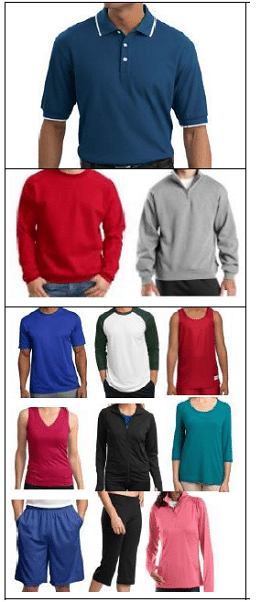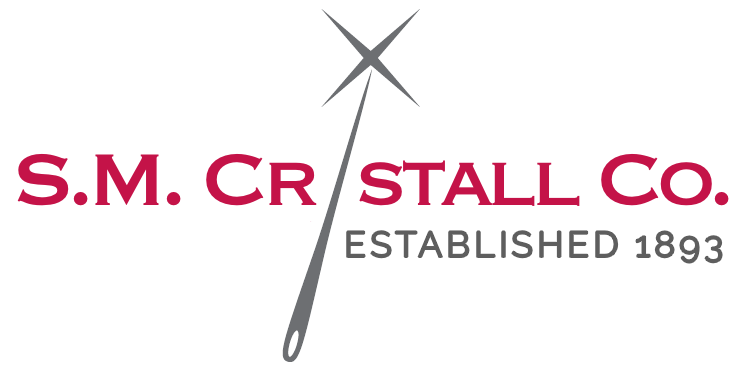Knowing which embroidery backing to use on a particular garment when you are getting ready to embroider your design will make the difference between turning out a mediocre product or a high quality finished product.
Backing is required to give the garment or piece of cloth more stability so that it can hold the stitches
Some people are under the impression and have even been told by other embroiderers or instructors that you do not need a backing if your garment is heavy such as a bag, cap or a jacket back. You will have a higher quality result with a finished design if you do use a backing.
Often if I have a garment such as a bag that is hard to hoop with backing, I will hoop it without the embroidery backing and slide a piece under the hoop when I put it into the machine. This applies only to very rigid fabrics. This will give it the stability and crispness needed for the finished product. It also gives you a piece of backing to rip against instead of your garment if you happen to make a mistake. And trust me from time to time, we all make mistakes!
I am going to share some pictures of the different types of garments with you and this may make it easier for you to understand which embroidery backings to use on each type.
Two Categories Of Embroidery Backings
There are basically two categories of embroidery backings but within these two categories there are different types that you need to carry in your inventory to be used on a daily basis depending on what type of garment you are going to be applying your embroidery.
- Cutaway
- Tearaway
Knit Fabrics-Cutaway Embroidery Backing
In the picture to the left you will see several types of knit garments. All of these garments should be backed with Cutaway backing.
There are several types of Cutaway embroidery backing but I am only going to be talking about 2 of them here.
Basic Cutaway backing is popular and is the most commonly used. It is a wet laid non-woven embroidery backing designed specifically for machine embroidery. Available in several different weights; I recommend and use the 2 oz. backing for most of my applications. It can be used on all types of knits but I specifically use it on my heavier knits such as the left chest areas of Sweatshirts and Fleece .
No Show backing is a very light weight waffle weave cutaway embroidery backing used for all light weight and pastel colored knit fabrics. Sometimes it is called a Mesh backing. This is my favorite cutaway backing and it is so soft that it is advisable to use 1 layer of tear-away backing under it for extra stability especially if you have small letters in the logo.
The tear-away will then be torn off and the No show backing will be cut away. You will not see a shadow of the backing from the front of the garment as you so often see when using the normal basic cut-away backing. This is extremely important when you are applying your embroidery to the very thin fabrics such as the pima cottons or the performance wear fabrics.
The No show backing also works great if you are embroidering the full front of sweatshirts because it will let it fall in a natural manner instead of being stiff once the backing is removed. This type of fabric does not need the extra bulk of the two layers of normal cut away backing. Many people think because it is a sweatshirt, that you need to use heavy backing; untrue. It is stability you are looking for; not weight.
The combination of 2 layers of No show embroidery backing and 1 layer of 1.5 oz crisp tearaway backing works great for the moisture wicking or performance wear fabrics that are so popular today.
The No show backing is a little more costly than the basic cutaway backing but to me the end result makes it well worth the cost. When I am trying to create a high quality product, I need to use high quality materials in order to produce that high quality product!
Woven Fabrics Tearaway Embroidery Backing
In the picture to the left you will see several types of woven garments. All of these garments should be backed with Tearaway backing.
Tear-away backing is used on all woven fabrics such as denim, chambray, twill, dress shirts, nylon oxford, canvas, bags, aprons, flags, sheets, pillowcases, tablecloths, napkins and etc.
It is also used on towels and washcloths. I have found that a 1.5 oz weight has worked best for almost all of my applications using the tear-away backing. I normally use two layers for most applications; sometimes I use only one and occasionally I will use three. I only hoop two layers into the hoop when I am hooping the garment, but I will place another layer under the garment after I put it into the machine. This will give extra crispness to small lettering. It actually makes the columns in the lettering wider. It can also prevent puckering if the garment is hooped tight enough and has the proper amount of backing.
If you have a full back design that has several thousand stitches you will need a 3 oz. crisp tearaway backing. This 3 oz crisp tearaway embroidery backing is the same one that is used in caps, but it is on a larger roll rather than being cut in 4 inch strips.
Cap backing is a 3 oz. heavy tear away backing that is used on caps, front, sides and back. It usually is available in strips cut at 4 inches wide to fit inside of the front of caps. I have found that one layer of cap backing will work great for most caps, but sometimes if you have an unstructured cap 2 layers will produce a sharper more crisp look than using one layer. I will hoop one layer into the cap when I am putting the cap onto the cap frame, and then lay the extra layer into the cap as I am attaching the cap frame to the cap driver on the machine. It really does not take that much extra time and I notice a huge difference. The lettering will be much flatter and does not pull in nearly as much.
If you would like a copy of the the images above send me an email to joyce@theembroiderycoach.com.






